Author: montlgln
Water Conservation in Orchards
Resources & Funding Sources
Montezuma Orchard Restoration Project has worked over a decade to help growers benefit from Colorado’s endangered heritage apple trees. In the face of climate change, drought, and agricultural water deficits, MORP believes there is an urgent need to help area farmers plan for future water shortages, and a timely opportunity to demonstrate resilient orchard management practices as we rebuild a fruit economy.
Today’s generation benefits from a still productive crop made possible by the hard work of Colorado’s early fruit growers. But now, this abundance is at risk of disappearing if new trees are not planted to take their place. MORP, with support from its partner The Nature Conservancy, works to address this urgency by creating knowledge and incentives for farmers to embrace resilient orchard management practices by converting degraded fields back into sustainable apple orchards—today.
This work recognizes that bringing back apples is not only about preserving cultivar diversity and restoring a fruit economy, but also about sustainability. Heritage orchards can be grown using water efficient technologies. Historic, wide-spaced orchards planted in native drought tolerant grasses and wildflowers will improve water conservation, soil health, biodiversity, and pollinator habitat.
By implementing and demonstrating resilient orchard management practices, and taking steps to ensure continued apple production, MORP works to increase farmers’ understanding and ability to manage land and water resources sustainability for the area.
Orchard Hub
MORP owns 36.35 acres of historic orchard property – now known as the Orchard Hub – in Dolores, Colorado, irrigated with 35 shares of Montezuma Valley Irrigation Company water.
Historically the property was used for orchards, but most of the trees were cut out by 1960 in favor of water intensive crops such as alfalfa. Over time the fields became unproductive, riddled with prairie dog holes, and overgrown with invasive species. This is a scenario that repeats itself across Southwest Colorado as the weather gets hotter and drier and farmers face water shortages (see Colorado Water Plan).
MORP offers hands-on demonstrations to incentivize farmers to adopt resilient orchard management practices that conserve water, soil health, and biodiversity by re-establishing 22 acres of heritage apples at the MORP Orchard Hub property, and hopefully on your farm too! Join us in this work today. Sign up for our e-newsletter to know of upcoming workshops.
Template for Water Conservation
Support from a Water Supply Reserve Fund grant helped make possible MORP’s work to install the first phase of orchard establishment and irrigation improvements on 6.20 acres of Orchard Hub property. We will continue this work until we complete the full system build out for a total of 22 acres. Please see the documents below to use as a model on your own farm to support orchard expansion using water efficient solutions. Reach out to us anytime with questions. Resources and funding sources are also listed at the top of this page.
Gold Medal Orchard
At the historic Gold Medal Orchard in McElmo Canyon, Colorado the spring mountain irrigation runoff is so dirty with debris by the time it reaches the canyon bottom, that even with simple inline filters we were having to remove many drip emitters EVERY day to keep them unclogged, a frustrating and labor filled process. And when the emitters were not flowing water efficiently the rare apple cultivars which fill the orchard were not getting sufficient water, threatening their preservation.
Despite this challenge we were still determined to reach our goal to switch from historic flood irrigation to a more water conserving irrigation method. A settling pond was not possible but we had another possible solution.
To improve the system, we reached out to the LOR Foundation with an idea: Purchase a SELF-FLUSHING filter* to convert the irrigation to a drip system that actually worked, thus conserving scarce community water and heritage fruit resources.
It worked! The emitters no longer clog up and water will now flow for a 24 hour period before we need to rinse out the new, self flushing filter. We now save hours on labor.
Most importantly, it is essential to conserve water through drought and shortages. The ability to efficiently deliver water to the trees is critical, and towards this end, working filtration was the key to our success! Thank you LOR Foundation!
* We installed an Amiad mini sigma filter recommended by and purchased through Quality Irrigation Solutions. Anthony Valdez is an excellent contact at QIS.
Got Apples?
MORP Seeks Apples to Buy
Do you have ripe apples that meet the criteria below? If so, please let Montezuma Orchard Restoration Project know! We are using the apples for pasteurized juice boxes so health regulations apply.
For Apples that YOU pick:
- Harvest from tree or shake onto clean tarp. No ground falls allowed.
- Apples must be clean – free of dirt, manure, leaves, twigs, or rot, and harvested into clean boxes or crates (see our Harvest Lending Supplies). Do not harvest where there is fresh manure and livestock. Follow GAP practices.
- We will pay $10/bushel for quantities of 20 bushels or more that you pick and deliver to the Orchard Hub (see directions below) per season. For quantities less than 20 bushels we will gratefully accept donations.
For Apples that WE Pick:
- Reach out to us if you have an estimated crop of 20 bushels or more and have an orchard that is free from livestock and fresh manure. Please rotate livestock out of orchard well ahead of harvest season.
- MORP will pay $4/bushel for apples that we pick that meet the health regulations described in the YOU pick section above. We are limited on the number of orchards that we can pick per season so reach out to us as soon as you know you have a crop for an increased opportunity to schedule your orchard in.
Community Juicing Day
Bring your apples and let us turn them into juice on Community Juicing Day! Or do you simply want to purchase juice and do not necessarily have apples to bring? Either way, please join us at the Orchard Hub!
Mobile Juicing Service
Have 20 bushels of apples or more? Consider scheduling our mobile juicing service.
Harvest Lending Supplies
Do you need crates or bins to more easily participate in any of the above activities? Please go here to reserve supplies. Our harvest lending supplies program is made possible with support from the LOR Foundation.
Directions to Orchard Hub
Directions to Orchard Hub: 13729 Road 29, Dolores, Colorado : THIRD and FOURTH DRIVEWAYs ON THE WEST SIDE OF ROAD NORTH OF SOUTHWEST SEED. Please schedule in advance or visit during scheduled event.
Contact
Pure & Local Apple Juice
Pure & Local Apple Juice
WINNER of the “Manufacturer with a Mission” award from Colorado Biz Magazine, 2022.
WHERE TO PURCHASE: Montezuma Orchard Restoration Project, Apple Core Project, Dolores Food Market, Pueblo Seed & Food Co, Fenceline Cider, Eso Terra Cider, Bountiful Ridge Farm, Four Seasons Greenhouse, Mesa Rose Kitchen + Bakery, Walk In Liquor & Coffee, Straw Hat Farm Market & Kitchen Store, The Butcher & The Baker, Bruno (Between the Covers coffee shop), Moonflower Community Cooperative, Oxford Orchard, Peachfork Orchards & Vineyard, Triple M Orchards, Wag’s World Orchards, Suarez Orchards, Connor Orchards, Wild Gal’s Market, Red Canyon Farm (McElmo Canyon)
Dear Apple Juice Lover,
Your every sip of pure and local heirloom apple juice directly supports our joint missions to preserve Colorado’s fruit growing heritage and restore an orchard culture and economy to the southwestern region.
We work to promote fruit tree preservation through mapping, identifying, grafting, planting, documenting and connecting local resources for preservation.
By providing mobile juicing services to area farmers, we help to build a market for previously un-harvested fruit in this very juice you drink.
Thank you for your support. Together we are the dedicated CORE keeping Colorado “Orchard County”.
Montezuma Orchard Restoration Project
Apple Core Project
Ingredients: Pasteurized, unfiltered apple juice
Processed and Packaged by: Montezuma Orchard Restoration Project
Instructions:
Pulp can naturally occur and may settle. Shake if desired.
Two month shelf life after opening.
Refrigerate after opening.
Keep box in pouring position once opened to prevent air from entering the bag.
DO NOT FREEZE
Historic Growers and Varieties
List of Old Colorado Apples
Grafting Workshop
You are invited to a Zoom Virtual Class: Learn to Graft with MORP!
When: Apr 9, 2022 10:00 AM Mountain Time (US and Canada)
Join Montezuma Orchard Restoration Project (MORP) to learn the valuable skill of grafting apple trees. Jude Schuenemeyer will demonstrate whip and tongue grafting technique, followed by Q & A. Register in advance for this free class.
After registering, you will receive a confirmation email containing information about joining the virtual class.You are invited to bring grafting supplies to this virtual class and follow along (grafting knife, bands, wax or parafilm, rootstock, scion, sharpie, tag).
A basic kit is available at https://www.fedcoseeds.com/ogs/grafting-kits-8971
Purchase rootstock from CopenHavenFarm: https://www.copenhavenfarms.com/apple-descriptions
Our friends at Big Horse Creek have good instructions on how to collect scion: http://bighorsecreekfarm.com/collecting-scionwood/
Burn Them! A Myth of Cider, Orchards, and Prohibition
BY ADALYN SCHUENEMEYER
This article was first published in Issue 11 / 2020 of Malus, a quarterly print journal featuring bittersharp criticism and commentary by America’s great cider thinkers. Subscribe today.
| Montezuma Orchard Restoration Project (MORP) has worked for over a decade to document and map the apple and orchard history in Colorado, to identify and propagate unique heritage apple varieties and to help farmers in southwest Colorado care for and benefit from their existing historic apple trees. We have been searching to find original sources that document orchards being destroyed or replaced due to local or national prohibition laws or the temperance movement, a myth often repeated in respected publications. To date, we have not found any direct accounts. Yet, the recounting of this urban legend has risen in popularity over the past several decades, even here in Colorado where orchards never were planted specifically for cider in the first place. There are many reasons for the loss of orchards, decline in diversity, and cider’s fall from popularity, but national Prohibition and the events leading up to it are not one of them. As part of our research, we contacted a handful of well known cider and apple historians to get their input including Ben Watson, author of Cider Sweet and Hard, (1999), Dan Bussey, author of The Illustrated History of Apples in the United States and Canada, (2016), Tom Brown (applesearch.org), David Benscoter of The Lost Apple Project, and Professor William Kerrigan, author of Johnny Appleseed and the American Orchard: A Cultural History (2012). “The oft-repeated example of the unnamed orchardist who took an axe to his trees in a fit of Temperance fervor is, even if true, an isolated example,” wrote Mr. Watson. “And the fact that cider, like wine, doesn’t require boiling like beer (or moonshine) made it very easy for people in rural areas to keep making cider under the radar; unless your neighbors dropped a dime on you, no one was going around trying to eradicate cider.” When asking writers that have contributed to this urban legend about their sources we are invariably lead back to Michael Pollan and his book Botany of Desire (2001) where he writes “Just about the only reason to plant an orchard of the sort of seedling apples John Chapman [Johnny Appleseed] had for sale would have been for its intoxicating harvest of drink. . . . . Eventually they [temperance advocates] would attack cider directly and launch their campaign to chop down apple trees.” William Kerrigan wrote about this myth back in 2014 on his blog American Orchard in a post titled “The Fall and Rise of Hard Cider”. In another post “The War On the Cider Apple”, he notes, “By 1829, at least a few farmers had taken the advice of “burn them” to heart. One report in several journals told of a New Haven, CT gentleman who “ordered a fine apple orchard to be cut down” because the fruit may be converted into an article to promote intemperance”. When we contacted Prof. Kerrigan about his sources he replied, “Perhaps there was one crazy guy out there in the pre-tractor age who expended the extraordinary energy to pull up/destroy/burn an orchard full of live trees because they believed alcohol was evil, or perhaps the story was made up entirely by someone who wanted to characterize Temperance advocates as fanatics. In either case, it is exactly the kind of story people repeat, so it is quite possible that one example of this was retold until folks thought it was widespread. I think even Thoreau mentions it in his essay Wild Apples, but again it is quite non-specific. I think the “Burn Them” article [originally in The Religious Intelligencer, Oct. 1827] is a good example of how these stories spread, as it was reprinted in numerous journals.“ |
 PHENIX GAZETTE, JULY 10, 1829 PHENIX GAZETTE, JULY 10, 1829 |
| Another part of this myth includes the narrative that the temperance movement led to the conversion of cider orchards to fresh eating varieties and to the destruction of supposedly cider-specific orchards planted by Johnny Appleseed. The primary reason most orchards were planted in the first place was for multi-purpose homestead use (including cider) or for the fancy fruit commodity market, but not solely for cider. “In his effort to subvert the popular, wholesome image of John “Appleseed” Chapman and portray him as a corrupter, he [Michael Pollan] essentially declared that the seedlings he planted had no other use than production of alcohol. It was an appealingly amusing story. It just was such an oversimplification,” added Prof. Kerrigan. We at MORP recognize that prohibition laws, put in place in Colorado in 1916 and nationally in 1920, did effect all alcohol production. However, a major reason that commercial production of hard cider was not part of Colorado’s founding history was due to the development of the grain-based beer brewing industry. German immigrants were transforming America into a beer-drinking nation years before Colorado became a territory. As Mr. Brown shared with us, “Hard cider is something people are reviving now. Of all the thousands of older people I talked to [in the South] not a single one mentioned hard cider.” Agreeing, Mr. Bussey wrote, “I’d like to concur that hard cider just wasn’t a “thing” commercially, and though it existed on a very small scale, it wasn’t a driving force as to the varieties grown. Beer and spirits were king as grain cultivation [in the Midwest and West] began early after settlement.” What About Them Apples? As to particular apple varieties falling in or out of favor, the people we’ve consulted support our conclusions that apple diversity declined for many reasons other than the temperance movement. One driving force was the recommendation by experts for farmers to turn to monocultural practices. According to Mr. Benscoter, “I have looked at a lot of newspapers from the early 1900s in eastern Washington State, and I have yet to find one that mentions hard cider, [although t]here is documentation right now for over 250 apple varieties [non-cider specific] in eastern Washington and northern Idaho in the late 1800s and 1900s.” Dan Bussey added, “The list of the apples to discard from cultivation was part of a concerted effort in many states, generally for the purposes of having as few as seven mainstay varieties to offer to the public as a larger number was thought to be confusing. It was all about marketing. Sad to think that many of the varieties are better than most of the apples you find today.” To which Mr. Benscoter replied, “It’s not surprising; quite a few lost [and documented from the period] varieties are on the list.” MORP’s own list of apples grown historically in Colorado includes over 400 varieties, 50% of which are considered lost. In America, fermented cider was a micro-industry, primarily in the east, using available orchard apples. By the 1880s, most apples in the United States were grown for eating, whether baked, dried, sauced, or fresh. Any excess crop was used for livestock feed, cider (soft and hard), or vinegar. Most of these were multi purpose apples, though a few, such as Harrison and Hewe’s Crab, developed reputations for making great cider. Vinegar was a particularly valuable product. “Cider vinegar (an indispensable product for preserving, cleaning, etc.),” wrote Mr. Watson, “requires that one ferment apple juice as the precursor to vinegar, and it makes even less sense to think that [hard] cider could disappear entirely as a homestead product. Much less that orchardists as a whole would actually chop down their trees. More common was the population shift to the new lands of the West. In Nelson, NH (a town of 500-600 people near where I live), the population in the 1860s was twice what it is today. That’s because farmers moved to less stony and more fertile lands in the Midwest and West after the Civil War.” Disappearing Orchards So, if not temperance beliefs or prohibition laws, what were the causes of orchards being razed to the ground, in other words, completely destroyed? A search of the digitized newspapers available at the US Library of Congress website showed that by far the number one reason orchards were razed, destroyed, or “grubbed out” was tornados, followed in no particular order, by wind storms in general, accidental fire, flood, development, cyclones, hurricanes, hail, war, dust storms, codling moth control (kill the orchard to kill the moth), fruit inspector orders, pests, and general spite or vandalism. Also, low productivity, disease, pest damage, or old age of orchard causing the owner to pick up an axe or torch. With the rise of industrialized agriculture, most of Colorado’s fruit industry was unable to compete on economy of scale. Despite the genetic diversity of our area’s first orchards, within 20 years, by 1910, local orchardists were turning to commodity crops realizing that a boxcar of shiny red apples sold better than one of mixed varieties. Prohibition and the temperance movement in general did not effect Colorado’s fruit industry in regards to either varieties selected or eliminated, or to its rise or decline. We invite you to do similar research where you live. If you find differently, please let us know! We must, we conclude, respectfully disagree with Michael Pollan’s belief that, “Carry Nation’s hatchet, it seems, was meant not just for saloon doors but for chopping down the very apple trees John Chapman had planted by the millions.” Instead, please raise a glass of your favorite cider and give “cheers” to all the women who today are playing a leading role in the resurgence of hard cider. |
Tree-a-gram
PLACE your Tree-a-Gram order by sending an email to morporchard@gmail.com. PAY for your order at the Donate Here button (click on the red apple at the sidebar).
Heritage Apple Tree Availability click to download excel spreadsheet for information on quantity and rootstock. Availability subject to change. If there are varieties that are listed on excel that do not have photos on this page that means they have sold out. Place your tree order at the donate button. Send us an email with special instructions.



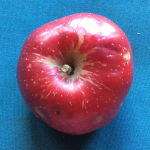
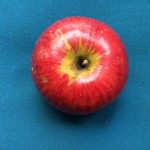
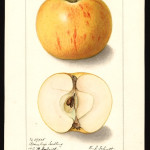

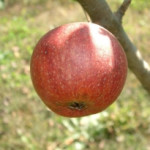
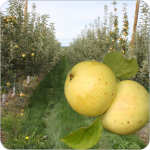
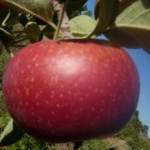

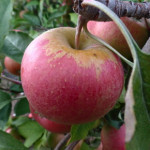
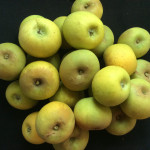
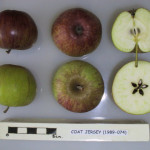
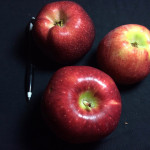
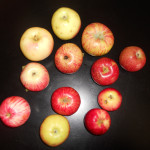

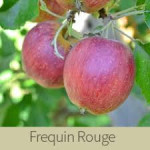
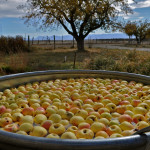
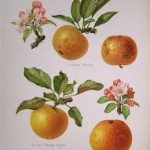
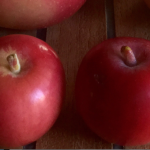

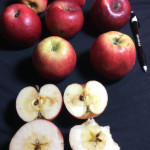
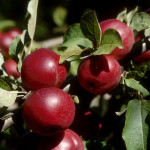
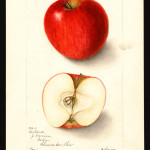
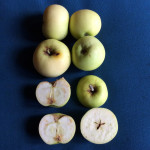
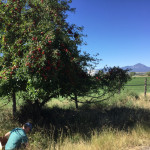
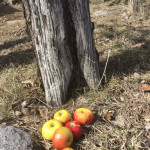

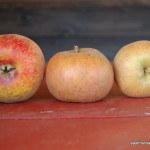
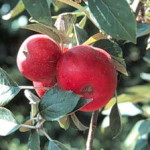

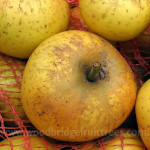
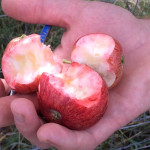
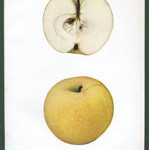
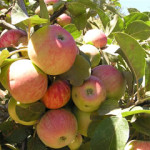

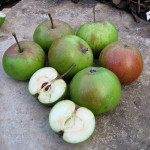
You must be logged in to post a comment.